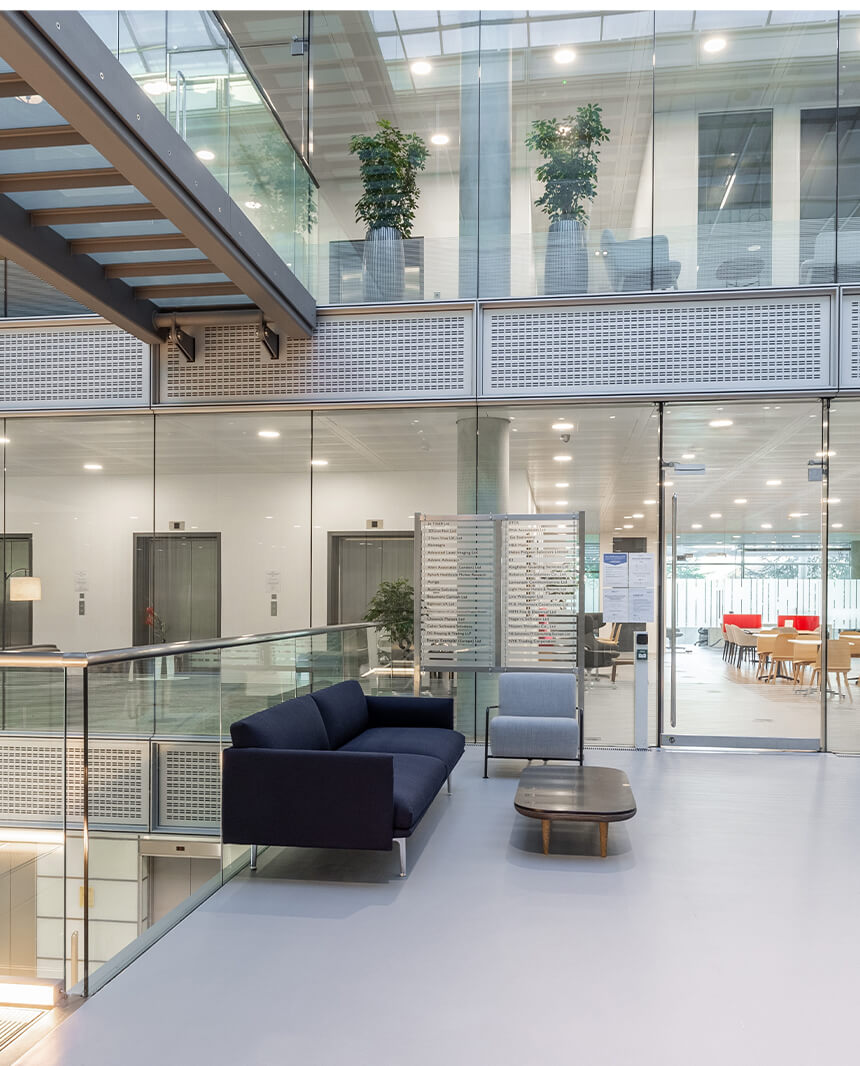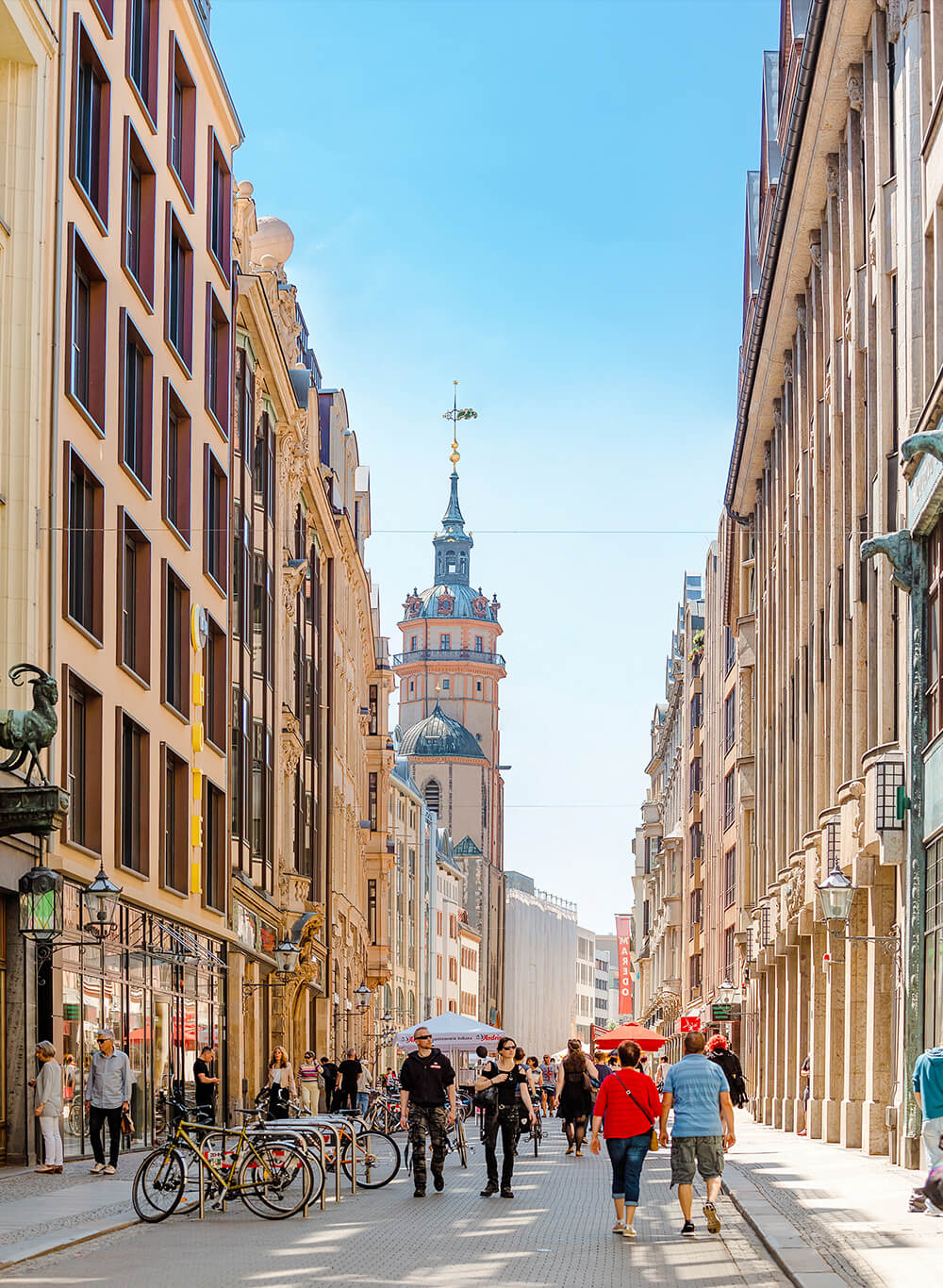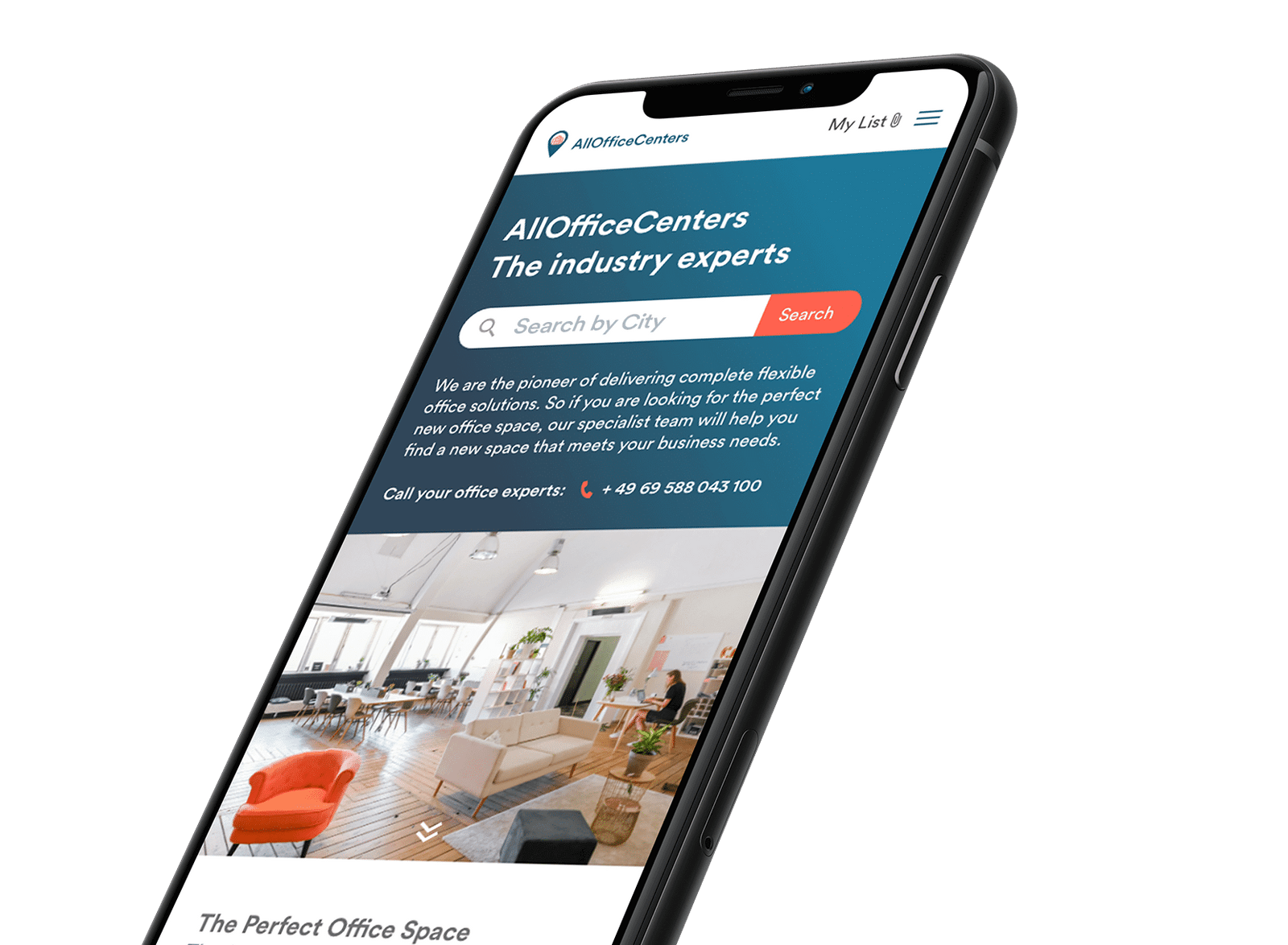Leipzig, Saxony’s 1,000-year-old city role model
In 2015, Leipzig celebrated a proud birthday: the 1,000th anniversary of its first documentary mention. The city’s history dates back to Roman times, and its location has made it an important center for trade from the very beginning. Today, this large city with a population of around 600,000 presents itself as a modern metropolis with numerous facets. It is a city of trade fairs, a city of books, a city of music – and no less a prosperous business location with attractive conditions for companies of all kinds.
In Wikipedia’s list of German cities by GDP, Leipzig ranks 16th. Industry representatives from the automotive and supplier industries, biotechnology and the healthcare industry, logistics, and the IT, media, and creative industries are based here. More than 44,000 companies are active here, including well-known brands such as Siemens, Porsche, and BMW. In addition to such “long-established” companies, the city has also proven to be a German hot spot for start-ups, attracting them in growing numbers from other regions. The city counted up to 250 start-ups in 2020 – boasting an atmosphere of innovation and therefore guaranteeing the region’s quite positive future prospects.
Record growth in the Saxon metropolis: best in class for many reasons
Measured in terms of population development, the Saxon metropolis was allowed to call itself the fastest growing city in Germany in 2020. Between 2005 and 2020, well over 122,000 new people moved into the city, 2,766 during 2019 alone (source: Leipzig Economic Report 2020). One explanation for this is, of course, the region’s economic strength – one must not forget its numerous “soft” location advantages though.
Leipzig is also considered particularly attractive due to its international flair, its central location in the heart of Europe, its traditional trade fairs, and the educational institutes and research facilities located here. In keeping with its long history, the city is home to numerous museums with important collections and exhibitions. The Old Theater and the more than 300-year-old Opera House invite visitors to spend evenings in a stylish atmosphere. Citizens and tourists also appreciate the zoological garden, the many historic buildings, and the numerous recreational options in the green belt of the city and its immediate surroundings.
Local traffic and transportation: strong performance in every respect
Last but not least, the infrastructure is excellently developed, not only within the metropolitan area (S-Bahn, streetcar, and bus), but also from a supraregional perspective: By long-distance trains, commuters and travelers can reach major cities such as Hamburg, Frankfurt, or Munich in under three hours, and motorists are also well connected in all directions via the A9, A14, and A38. Of particular interest from a business, perspective is Leipzig/Halle Airport, an internationally important air freight hub with over one million tons of cargo per year. A transport performance that is also under the EU banner “2050 CliMobCity“, the ambitious goal of realizing sustainable mobility across the board.
Long story short: The economical “role model” Leipzig meets all the criteria for your successful business and the satisfaction of your team.



